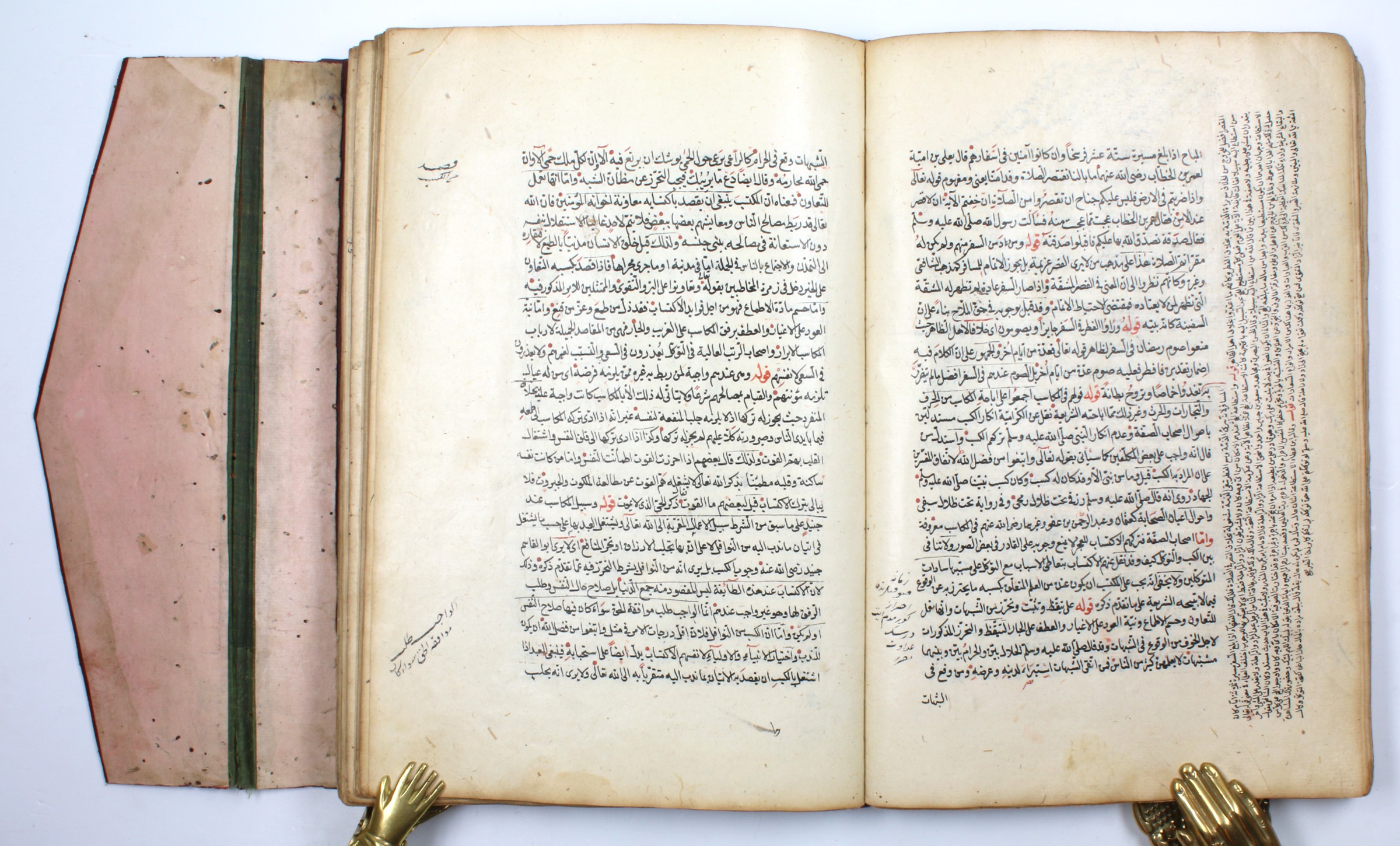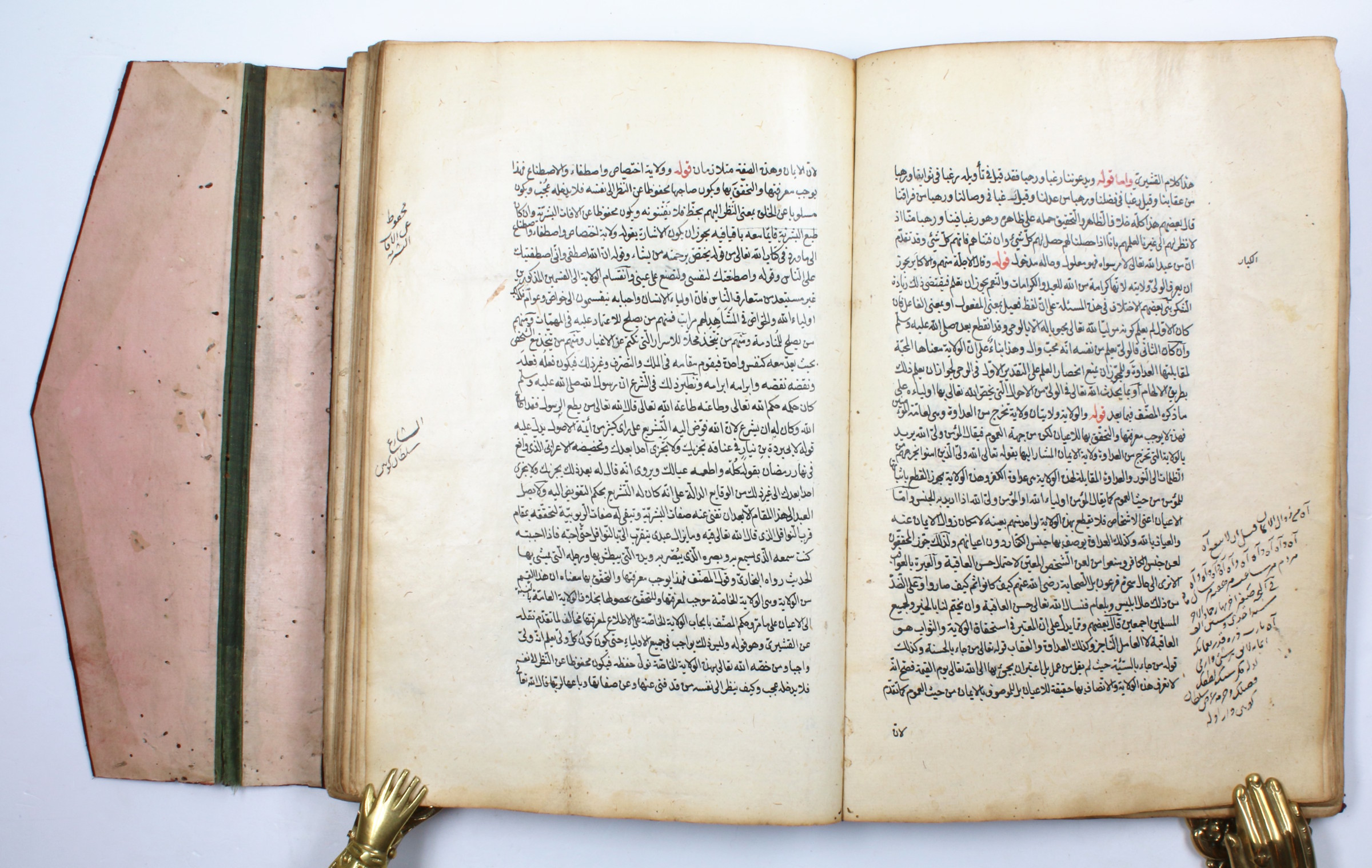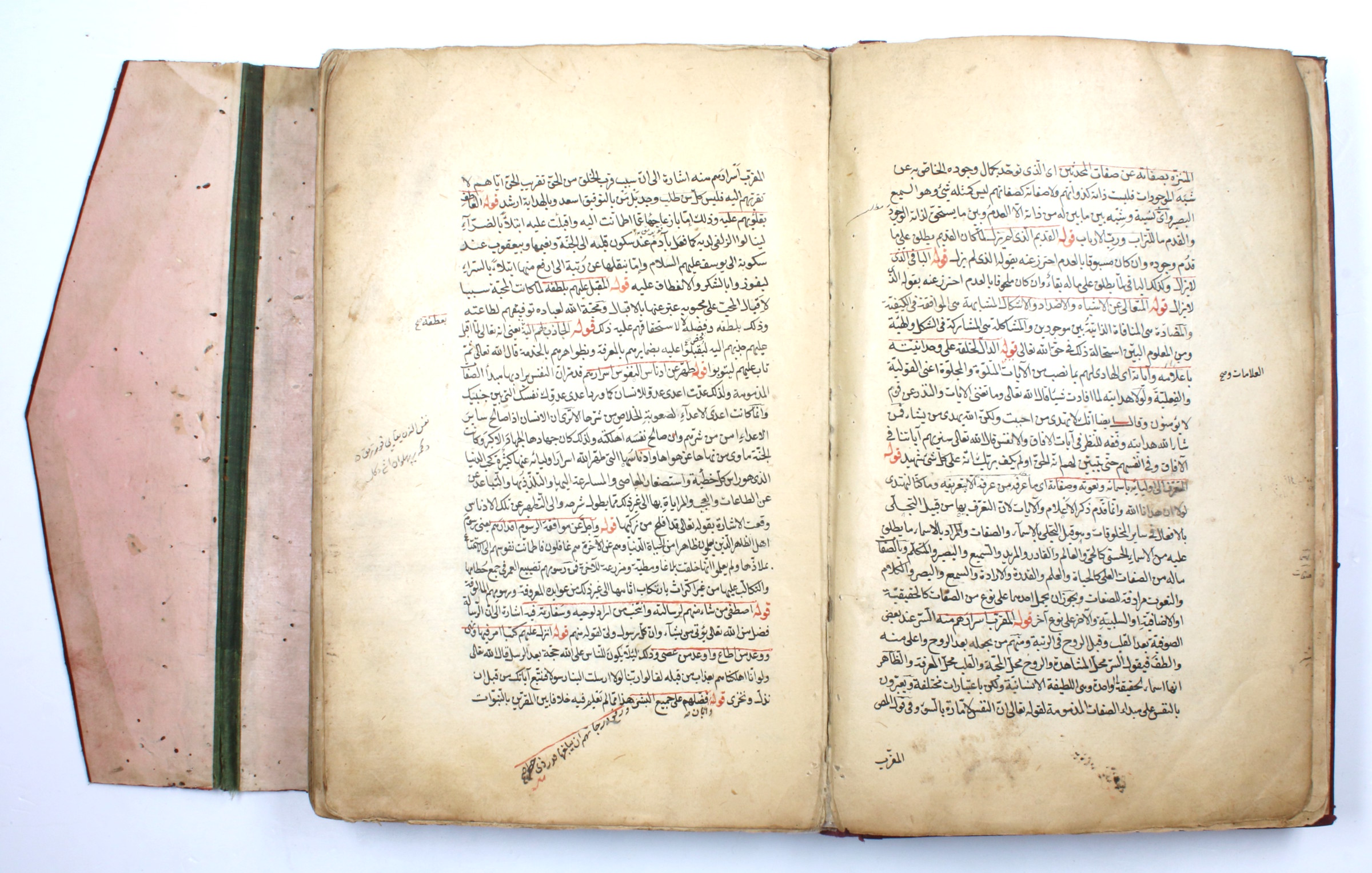16th century manuscript on the foundations of Sufism
Kitab sharh al-ta' arruf li-madhhab ahl al-tasawwuf [Commentary on the Doctrine of Sufis].
Large 8vo (184 x 272 mm). 216 ff. Arabic manuscript on polished paper. Tidy black naskh script with important words and phrases picked out or struck through in red. 18th century full red calf triple-ruled in gilt.
€ 18.000,00
An early manuscript commentary on the "Kitab al-ta'arruf" (generally known in English as "The Doctrine of Sufis"), a foundational text of Sufism and one of only two surviving works by the Persian Sufi mystic and Hanafi jurist Muhammad ibn Ibrahim Kalabadhi (d. ca. 994 CE). The commentator, 'Alu al-Din ibn Isma'il al-Qunawi, was from Konya but spent most of his life in Syria, where he died in 1329.
The book which made al-Kalabadhi's fame is divided into 75 relatively brief chapters, to which long commentaries have traditionally been appended. The original text discusses such issues as the origin and meaning of the term "Sufi" itself, an enumeration of the Sufi masters, and the dogmas of the Sufi doctrine. In sections regarding the latter, it is clear that al-Kalabadhi was anxious to reconcile the Sufi doctrine with mainstream Islam - in fact, he was among the first Sufi authors to strive to do so. This was likely affected in part by the political and religious climate in which al-Kalabadhi was living, as at the time, Sufism was at risk of being declared a heresy. The fear was not unfounded: in 922 CE a famous Sufi known as al-Hallaj had been publicly executed in connection with a heresy case. The ill-fated al-Hallaj himself is frequently referenced in Kitab al-ta'arruf (but never cited by name), suggesting al-Kalabadhi was familiar with both his writings and his fate.
Al-Kalabadhi's second aim, equally of interest to his commentators, was to advocate the Sahu ("sober") school of Sufi thought, and to further describe those philosophies and interests which were distinctive to Sufism: spiritual states of the mystic, spiritual hearing, and phenomena peculiar to Sufis.
Rebacked with early 20th century spine. A few leaves with marginal dampstain not affecting text. Remarkably bright and clean, in good condition.




















